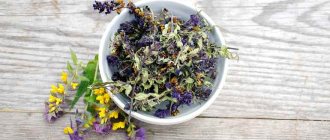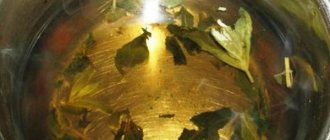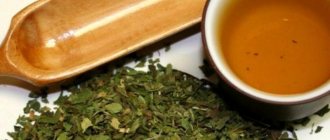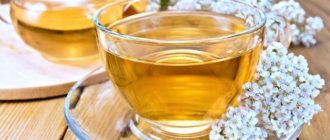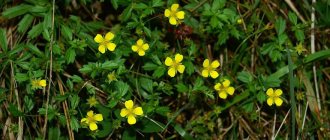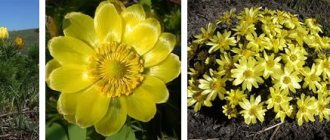Characteristics of the plant and collection for maximum benefit
Jujube grows naturally in Kazakhstan, Mongolia, Kyrgyzstan, Russia, Tajikistan, Turkmenistan and Uzbekistan.
We are talking about an aromatic subshrub, reaching a height of approximately 30 cm, with a large number of stems covered with fine hair in the inflorescences (the inflorescences are characterized by a hemispherical shape).
The flowers are violet or lilac with a pink tint. Flowering period: May-August, fruit ripening time: July-September.
The collection is carried out during the flowering period, before the grains appear, because The healing properties of ziziphora are inherent specifically in the greenery (stems and leaves) and flowers.
Composition of nutrients for the body
The beneficial properties of ziziphora are beyond doubt. The rich chemical composition of the herb is responsible for the beneficial effects on health:
- essential oils (pulegone, isopulegol, isomenthol, menthol, limonene, thuyene, pinene, pinene, carvacrol) - substances that provide ziziphora with its characteristic aroma and have an analgesic effect;
- bitterness, tannins - their benefits include accelerating the healing of wounds and cracks in the skin, an anti-cancer effect, treating diarrhea and eliminating nausea;
- vitamin C is an antioxidant that contributes to the overall strengthening of the body’s defenses;
- betulin;
- ss-sitosterol;
- glyceryl 1,3-dilinoleate;
- triterpenes;
- alkaloids;
- flavonoids;
- phytoncides;
- terpineol;
- butyric acid;
- linoleic acid;
- stearic acid;
- palmitic acid.
Secret ingredients of ziziphora
The herb ziziphora was used by our ancestors intuitively, using scientific poking. But you and I can already decompose any plant into its component components. So what do we see?
- Essential oils: menthol, pulegone and others. They are the reason for this indescribable steppe aroma of ziziphora. Their action is nourishing, analgesic, anesthetic.
- Tannins and bitterness. And we say “stop” to wounds, cracks, tumors and irritations, nausea and diarrhea.
- Vitamin C. And this is health, and this is strengthening the immune system, and this is the fight against colds.
- Flavonoids. This again strengthens the immune system and fights external micro-pests - toxins.
Hibiscus tea: beneficial properties, contraindications, benefits and harms
And these are just the main components. Ziziphora also contains acids, coumarins and other chemical components. Contraindications relate specifically to them, and not to the action of the plant in decoctions and infusions.
Therapeutic effects on health
The effect of the herb on the body during diseases is very expressive, and is represented by the following qualities: immunomodulatory (general strengthening of the body);
- Astringent.
- Antisclerotic.
- Antibiotic.
- Antipyretic.
- Antispasmodic.
- Sedative.
- Decongestant.
- Antihypertensive.
- Antibacterial (especially in the gastrointestinal tract).
- Anti-neurotic.
- Anti-stroke.
- Diuretic.
- Stimulation of hematopoiesis.
- Hemostatic.
- Antiparasitic.
Medicinal uses of ziziphora
Along with traditional medicine using ziziphora as an ingredient in medicines, traditional medicine also uses the plant to treat a number of health problems.
Recent studies have confirmed that the plant is an excellent remedy for the treatment of all heart diseases, especially those associated with high blood pressure. The active ingredients of ziziphora leach into alcohol well, so it is recommended to use it in tincture form.
Tea helps with weakness and dysfunction of the heart muscle, relieves pain in the heart and treats angina pectoris, increases diastole (the time the heart chamber fills with blood) and reduces the heart rate.
Article for you:
Medicinal properties of orchis and its use in folk medicine
The second, equally important use of ziziphora in folk medicine is due to its powerful ability to calm the entire body. It has a beneficial effect on the nervous system and is therefore a natural first-line remedy in the treatment of cardiac neurosis.
Its good effect on the nervous system is used for agitation during menopause, nervousness, anxiety, migraines and other types of headaches, physical overload and heart problems caused by physical overexertion.
Some sources indicate the therapeutic effects of ziziphora for diseases of the thyroid and prostate glands. However, these effects have not been officially proven to date.
A related feature of using the herb is its beneficial effect on the digestive system. The main therapeutic uses of ziziphora can be summarized in the following points:
- heart diseases;
- high blood pressure (hypertension);
- asthma;
- excessive sweating;
- migraine;
- colds;
- flu;
- feverish conditions;
- insomnia;
- edema of various etiologies;
- cough of various origins;
- bronchitis;
- bowel dysfunction;
- joint diseases;
- radiculitis;
- depression;
- diarrhea.
The standard dosage of natural medicine is 15-18 g in the form of a decoction. In Iran, ziziphora is used as a spice.
Recipes
Infusion (general recipe):
- 1 tbsp. with a heap of dried ziziphora herb;
- 1 tbsp. boiling water
Pour boiling water over the ziziphora, let it brew for 2 hours and strain. Take 1-2 tablespoons 3-4 times a day. The recommended course of treatment is 2-3 weeks. For heart disease, drink 50 ml of infusion 2-3 times a day. The recommended course of treatment is 20 days.
This infusion can also be used for gargling for sore throats and preparing lotions for open wounds and fungus on the skin.
Infusion for colds and flu:
- 3 tbsp. ziziphora herbs;
- 400 ml boiling water.
Pour boiling water over the herb and let it brew for 2 hours. Strain. Drink warm 3-4 times during the day. Decoction:
- 3 tbsp. dry ziziphora herb;
- 500 ml hot water.
Pour water over ziziphora, bring to a boil and remove from heat. Let it brew for 2-3 hours and strain. Take 2 tablespoons 2 times a day. The decoction is recommended for neuroses, vegetative-vascular dystonia, heart disease, and helminthiasis. Decoction for colic:
- 1 tbsp. dry ziziphora leaf;
- 250 ml boiling water.
Pour boiling water over ziziphora and boil for 3 minutes. Then let the broth brew for an hour and strain. Take 1 tablespoon 4 times a day. This remedy can also be used to relieve nausea and stimulate appetite. Decoction for external use:
- 1 tbsp. ziziphora herbs;
- 300 ml boiling water.
Pour boiling water over the herb and cook over low heat in a water bath for 10 minutes. Then let the broth brew for half an hour and strain. Use to prepare compresses for rheumatism and rinses for toothache. This infusion can also be taken orally: 50 ml 3-4 times a day between meals.
Tincture for hypertension:
- 50 g dried ziziphora herb;
- 500 ml vodka.
Pour vodka over the grass and place the container with the mixture in a dark place for 10-14 days. Strain. Take 20-25 drops of the prepared tincture, diluted in a small amount of water, 3 times a day before meals. Recommended course of treatment: 4 weeks of admission, 1 week off, and you can repeat the course two more times. Tincture for colds:
- 4 tbsp dry ziziphora herb;
- 350 ml 70% alcohol.
Fill the herb with alcohol and put the container in a dark place for a week. After 7 days, strain. Take 20 drops of the prepared tincture, diluting them in a tablespoon of water, three times a day before meals. This remedy can also be used to treat hypertension. Rub for joints:
- 2 tbsp. dry ziziphora herb;
- 1 tbsp. boiling water
Pour boiling water over the herb and boil for 20 minutes in a water bath. Then remove the broth from the heat and let it brew for 45 minutes. Strain and add boiled water to the original volume. Use the resulting product to rub your joints three times a day. Can also be used for radiculitis. Continue the course of treatment until pain is relieved.
Use during pregnancy and breastfeeding... benefit or harm?
Despite all its beneficial qualities, ziziphora is not recommended for pregnant and lactating women. The plant can cause harm in the form of unpredictable allergic reactions due to the content of a number of essential oils.
If absolutely necessary, it is important to evaluate the benefits and potential harms. You should never self-medicate! Therapy with ziziphora should be prescribed exclusively by a doctor.
Article for you:
Tansy: medicinal properties and contraindications, use in folk medicine and cosmetology
How to prepare the medicine correctly
To prepare the medicine you need to take 1 tbsp. l. dry raw materials and pour boiling water in a small glass. Then you should leave it in a warm place for two hours. Then the mixture is filtered through ordinary gauze folded in half.
Syn: odorous, sweetheart, deer grass.
Jujube clinopodia (also known as Jujube odorant) is a perennial herbaceous plant with a thick, woody rhizome. In folk medicine, herbal infusion is most often used as a general tonic. Ziziphorus oil is believed to have analgesic properties.
experts
In medicine
Jujube clinopodia is not included in the State Pharmacopoeia of the Russian Federation and is not used in official medicine. The plant is used only in folk medicine in the form of infusions, decoctions, and tinctures.
Contraindications and side effects
The plant Ziziphora clinopodiata has not been sufficiently studied. Therefore, it is unknown whether ziziphora has serious contraindications. It is worth paying attention to the fact that the plant contains essential oils and allergic reactions may occur.
In cooking
Ziziphora is used in cooking mainly by the peoples of Western Siberia and Kazakhstan. There this plant has been known since ancient times and is valued for its pleasant aroma. The stems and flowers of Ziziphora clinopodium are added to fish soup and fish soup to give them a minty taste. In Central Asia, Ziziphora clinopodium is widely used as an aromatic additive to tea.
In other areas
Ziziphora essential oil is very aromatic and fragrant, has a herbaceous-spicy aroma with resinous fusel tones and a pleasant floral note. It is used in perfumery to flavor soap.
A decoction from the above-ground part of the plant is used for compresses and aromatic baths.
Classification
Odoriferous, oregano, clinopodium ziziphora (lat. Ziziphora clinopodioides Lam.) is a plant, a species of the genus Ziziphora (lat. Ziziphora), family Lamiaceae. The genus Ziziphora (lat. Ziziphora) includes more than 30 species of plants, almost all of them are highly aromatic and contain significant amounts of essential oils. But it is the clinopodium ziziphora (lat. Ziziphora clinopodoides Lam.) that is of particular value and is used for medicinal purposes.
Features of Ficus Benjamin Natasha: difficulties in growing, reproduction and care at home
Botanical description
Jujube clinopodia is a perennial herbaceous plant with a woody, thick rhizome. Stems 20-40 cm high are covered with short hairs. The leaves are ovate, entire or barely toothed, slightly hairy.
The flowers are small, mauve, in a few false whorls, very often crowded in the upper part of the stem and branches, sessile or on peduncles. The calyx is elongated, narrow-tubular with 13 veins, and hairy at the throat. The corolla is small, with a barely protruding, upwardly widened tube without a ring of hairs. Ziziphora clinopodium blooms from late June to late August.
Spreading
Jujube clinopodia grows in the Mediterranean, Europe, Western and Central Asia. The plant is quite rare. It is found in meadows, gravelly and rocky slopes of hills and mountains, rocky river banks, mainly in the subalpine zone of the region.
Regions of distribution on the map of Russia.
Procurement of raw materials
Ziziphora clinopodium blooms from June to August, at which time the raw materials are collected. Jujube accumulates medicinal properties in flowers, stems and leaves, so plants are collected before seeds form. The raw materials are dried outdoors, in the shade. Then they are packaged in canvas bags or plastic containers. Store raw materials in a dry place for no more than two years. Jujube retains a persistent minty aroma for a long time, so it is placed separately from other herbs.
Chemical composition
Phytonicides, an essential oil that contains alcohol, menthol, pulegone, coumarin, and alpha-terpinene, were found in the stems and inflorescences of ziziphora. The roots contain a lot of vitamin C, flavonoids, tannins, saponin, and essential oils. Ziziphora seeds are rich in fatty oils, hydrolyzed oleic, stearic, palmitic and linolenic acids.
Pharmacological properties
Jujube, the beneficial properties of which have been known to the peoples of Western Siberia and Kazakhstan since ancient times, is used in traditional medicine to treat many diseases. The plant has hemostatic and analgesic properties, and ziziphora oil has fungicidal and antibacterial properties.
Use in folk medicine
Ziziphora is often added to herbal preparations that have a not very pleasant smell. Its persistent, pleasant, fragrant, slightly minty aroma improves the smell of the collection.
The analgesic properties of ziziphora make it a popular plant for herbal collections, which are recommended for colds, toothache, and scrofula.
Essential oils of ziziphora, mixed with a neutral base, are used for rubbing against rheumatism. The tincture has a cardiotonic, hypotensive, anthelmintic effect.
The use of ziziphora for intestinal disorders and diarrhea is also possible; the tannins contained in the ziziphora herb help cope with these unpleasant diseases.
Historical reference
In Siberian folk medicine, an aqueous infusion of Ziziphora clinopodium was used as a sedative for the heart, as well as for scrofula and colds. Externally - for rheumatism and toothache.
Ziziphora has been written about in fiction. “Ziziphora smells like freedom. Sweet and alarming, covered in the free air of the blooming alpine steppe, between the mountains.” This is what Renata Laricheva says about this plant in her story “Plutonia”.
Literature
1. Great Soviet Encyclopedia.
2. Ch. ed. 1-7 vols. — S.I. Vavilov, 8-51 vols. — B.A. Vvedensky. 2nd ed.
3. T. 1-51. M., “Big owl. Encyclopedia", 1949-58. 300,000 copies (Alphabetical index in 2 books).
Jujube is a perennial subshrub that has numerous and pubescent stems, they can reach a height of about 40 cm. The leaves are narrowly lanceolate, long, entire, tapering on both sides, they are completely bare, and have dotted glands. Jujube is distinguished by a capitate, loose and hemispherical inflorescence. The corolla is slightly pubescent, most often pink. The plant begins to bloom in mid-summer. Ziziphora is widespread in Western Siberia and Asia. Most of all it prefers mixed-grass steppe, gravelly, rocky and clayey slopes of rocks.
Beneficial properties for men
For men, in relation to ziziphora, the primary role is played by its ability to dilate blood vessels and improve blood circulation, thereby ensuring blood flow to the genitals. This helps improve erection and prevent prostate problems.
Treatment and prevention of cardiovascular diseases also deserve attention, because it is men who are most susceptible to developing these health problems.
Treatment of various diseases
The medicinal properties of the medicinal herb ziziphora can be used in different forms of its preparation. Alcohol tinctures, decoctions, teas are prepared from the plant... The type and dosage of natural medicine depends on the expected therapeutic effect and the specific health problem. All parts of the plant are used in treatment - flowers, stems and leaves.
Heart diseases The active substances present in ziziphora actively counteract the development of heart disorders - attacks, angina pectoris, arrhythmia, tachycardia, etc. An infusion of the herb is recommended for the treatment and prevention of heart problems.
Infusion for hearts 1 tbsp. dried raw materials, pour 1 cup of boiling water. Leave for 1-1.5 hours. Express. Take 2 tbsp. 3 times a day. An improvement in the condition can be observed after 2-4 days of using the natural medicine, however, it is necessary to complete the therapeutic course of 1 month.
Tea mixture to calm and strengthen the heart You need (in equal quantities):
leaves, stems or flowers of ziziphora;
- lemon balm leaves;
- valerian root;
- St. John's wort leaves;
- hawthorn leaves and flowers;
- rue leaves.
1.5 tbsp. pour 1/2 liter of boiling water over the mixture, cover and leave for 20 minutes. Drain and drink 3 times a day, a third of the infusion. Therapeutic course – 3 weeks.
A decoction to improve cardiac activity you need:
- 2 parts each of hawthorn and ziziphora flowers;
- 1 part each of St. John's wort and lemon balm.
1 tbsp. raw materials, pour 1/2 liter of boiling water. Leave for 20 minutes, drain. Divide the prepared amount into 3 parts and drink throughout the day. Therapeutic course – 3 weeks.
Article for you:
Eyebright herb: medicinal properties and contraindications
Intestinal diseases and edema To treat intestinal problems and eliminate edema of various origins, it is recommended to drink ziziphora tea.
Tea for the intestines and against swelling 1/2 tbsp. pour 250 ml of boiling water over the flowers. Leave for 1 hour. Take 3 times a day, 1-2 tbsp. Therapeutic course – 2 weeks. After a week's break, treatment can be repeated.
Problems with joints and radiculitis Diseases of the joints, sciatica, radiculitis...
These are problems that concern not only older people. More and more representatives of the middle age group are at risk of developing them due to professional activities (for example, sedentary work).
Therefore, the treatment of such diseases is a pressing issue that does not depend on age. A decoction of ziziphora will help fight pain.
Decoction for joints and against radiculitis 2 tbsp. raw materials pour 250 ml of water. Bring to a boil and cook for 15-20 minutes. After cooking, add boiled chilled water to the original volume.
Use the decoction to rub painful joints and areas affected by radiculitis several times a day.
Note! Positive results will become noticeable after 2-3 days of treatment, but it is important to carry out the entire therapeutic course, continuing until the problems completely disappear.
Colds and flu To relieve the symptoms of colds and flu, an alcoholic infusion of herbs is used. To prepare it, 3 tbsp. dried raw materials, pour 300-400 ml of alcohol (up to 70%). Leave to infuse for a week. Then strain. Take 25-30 drops 3 times a day until symptoms disappear.
Pressure For hypertension, use a tincture prepared according to the above recipe. Dosage – 20 drops, number of doses – 3 times a day. The therapeutic course is 3 weeks.
Contraindications and warnings
There are no direct contraindications for ziziphora. Relative ones include childhood, pregnancy, feeding and a tendency to allergic reactions - all of them are caused by the content of a number of essential oils that can cause an unpredictable response in the body.
Therefore, during pregnancy, breastfeeding and in childhood, it is advisable to avoid taking the herb. In all other cases, if any adverse effects occur after use, discontinue use and consult a doctor.
Application
The range of applications of the product is extremely wide; it is used with equal success in both medicine and cooking.
To prepare medicinal products at home, you can use independently prepared raw materials or purchased at a pharmacy
In medicine. Treatment of various diseases. Folk recipes
In folk medicine, ziziphora odoriferous is considered universal. The forms of use of the healing Altai herb are different: decoctions, infusions, tea, oil.
So, for diseases of the cardiovascular system, prepare an infusion of 1 tbsp. l. crushed dried leaves and flowers per 1 cup of boiling water. The mixture is left for 1.5 hours, then filtered and taken 2 tbsp. l. 3 times a day. The full duration of the course is 1 month.
For diseases of the gastrointestinal tract, chronic indigestion, bloating, colitis and gastritis, use tea from 2 tbsp. l. flowers per 1 cup of boiling water. You need to insist for 1 hour. Take the product 1 tbsp. l. three times a day for 2 weeks. If necessary, the course is repeated.
For the treatment of swelling, radiculitis and arthritis, a decoction of 2 tbsp is recommended. l. dried plant parts to 1 glass of water. The mixture is boiled over low heat for a quarter of an hour, then diluted with cold boiled water and used for rubbing several times a day, as needed. The patient experiences the first relief already on the 2-3rd day. However, it is important not to stop the course at the first results, but to carry it through to the end, i.e. 1 month.
To relieve symptoms of respiratory diseases, including those of viral origin, an alcohol tincture of ziziphora is recommended. 3 tbsp. l. dried raw materials are poured with 400 g of alcohol with a strength of 70% vol. Infuse for 5-7 days and then filter. The resulting medicine is taken 30 drops three times a day until symptoms disappear.
For high blood pressure, VSD syndrome and concomitant migraines, the same tincture is prepared, but the dose is reduced to 20 drops. The full course of treatment lasts 3 weeks, after which you need to take a week's break and repeat if necessary.
In cooking
The plant is loved for its specific pleasant aroma and is used as a valuable seasoning in Kazakhstan and Western Siberia. Jujube is used mainly to season fish dishes: fish soup, stew, etc. Sometimes it is used as an additive to meat dishes, especially lamb, and homemade cheeses.
And in Central Asia, the herb is used as part of multi-component herbal teas. It is also used for flavoring sweet wines, sorbet and drinks based on it.
the beautiful decorative qualities of ziziphora allow it to be used to decorate the landscape


